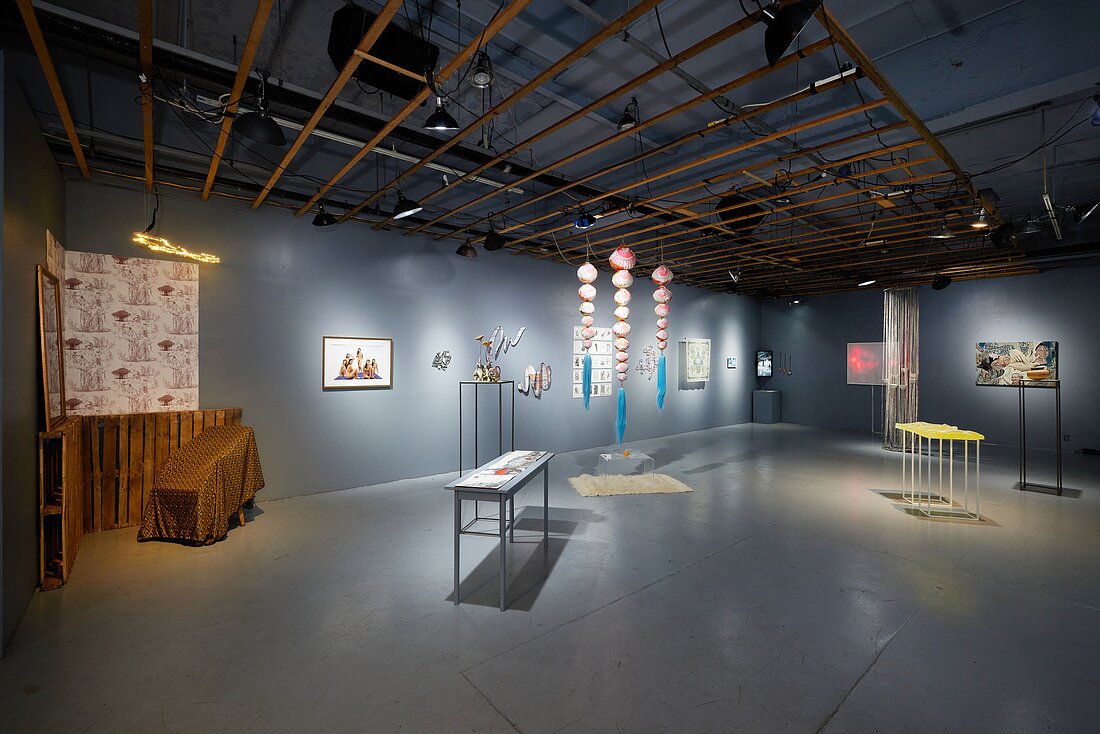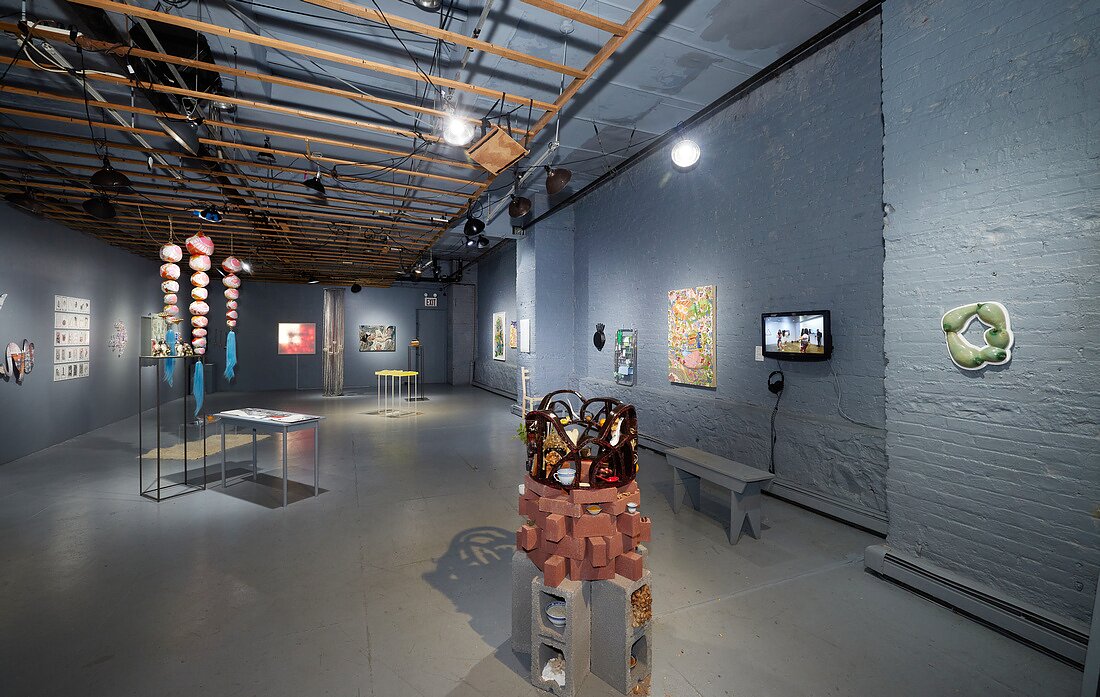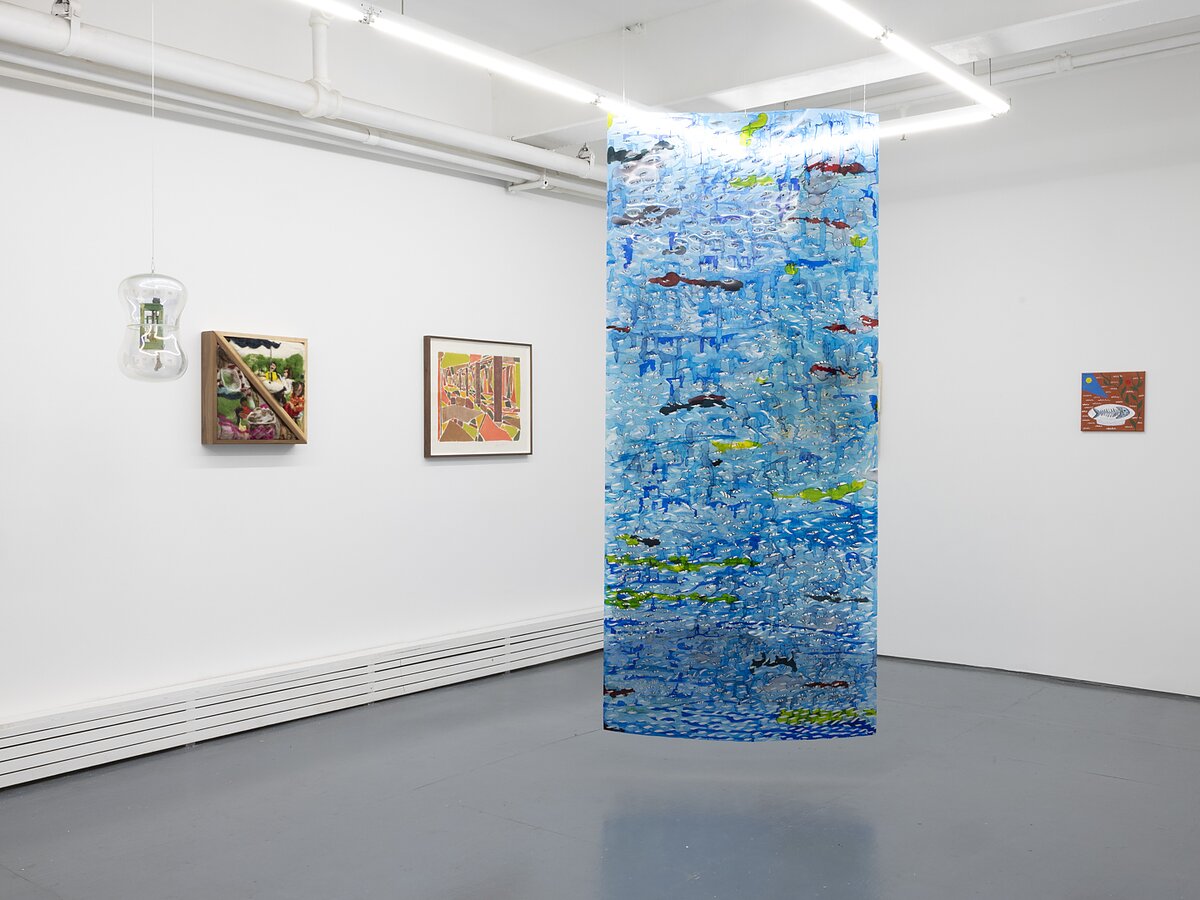Cecile Chong and Sophia Ma on Curating a Show with 45 AAPI Artists
In the spring of 2018, artists Cecile Chong, Sara Jimenez, and Maia Cruz Palileo, along with curator Gabriel de Guzman came together as an informal group of AAPI artists and art workers under the name, “Asianish.” Their aim was to create a space where artists could share conversation, art, and food in a space where they could be vulnerable and feel affirmed. With the concurrent events of COVID-19, the spike in anti-Asian violence, and the global reckoning with racial injustice in 2020, the need for this type of safe communion became all the more vital. By 2021, the meetings became weekly.
These days, Asianish includes over 100 members, many of whom currently have their work shown as part of “Gathering” at FiveMyles gallery through August 13th (the second part of the exhibition, which took place at Tiger Strikes Asteroid, closed on July 30th). Curated by Asianish member and curator Sophia Ma and Cecile Chong, the exhibition invited the community to submit works via an open call. Forty-five artist responded, including Ae Yun Kim, Christina Yuna Ko, Chanel Matsunami Govreau, Risa Puno, Natalia Nakazawa, zavé martohardjono, and Winnie Sidharta Ambron, making it one of the largest exhibitions of AAPI artists to date. The result is a show far greater than the sum of its parts, showcasing the ever-evolving vastness, and multiplicity of AAPI identity.
As the second half of “Gathering” comes to a close, the Amp’s editor Shannon Lee spoke to Chong and Ma via email about Asianish, the process of curating such an ambitious exhibition, and what’s next for the group.
CC: For me the answer to this question is twofold. It includes intention and personal reflection.
During the pandemic, Asian American communities were going through a lot of pain and suffering, and I wanted to do something positive to celebrate our community. Having virtual studio visits with artists in our Asianish group and seeing the high quality and impact of their work made me want to see it all brought together. As an artist member of Tiger Strikes Asteroid (TSA), I want to curate exhibitions that “fill gaps” in a way. My first exhibition at TSA was titled (Be)longing. It was co-curated with Eva Mayhabal Davis. We included artists who work with concepts of migration and belonging. For my second curatorial project at TSA, I was determined to bring joy and uplift Asian American voices. I invited Sophia to co-curate with me. I also wanted to approach Hanne Tierney, the director of FiveMyles, to see if she would be interested in hosting a part of the Asianish exhibition. We had so many artists interested in participating we knew we could not all fit at TSA. To my surprise, Hanne had already had the same idea and asked me before I could ask her!
On a personal level, when imagining the show, I reflected on my childhood experience of growing up in Quito, Ecuador, the place that I call home. In the ‘70s and '80s, there were perhaps about only 500 Chinese people living in Quito. My mother was the vice-president of the Colonia China, a group for Chinese Ecuadorians and recent arrivals from China. That group got together a few times a year and was one of my mother’s most cherished communities. Although my mom was born in Ecuador and blends seamlessly into the Ecuadorian culture, I often sensed her joy and how she looked forward to getting together with her “paisanos chinos.”
At that time, the sight of an Asian person was not common in Quito. Whenever my sister and I were picked on or bullied on the streets due to our Asian appearance, my mother often asked us what we did about it. “Y tú, qué dijiste, qué hiciste?” (And what did you say? What did you do?) This question sometimes still rings in my ears. I soon realized that she was putting the power back on me to do something. In many ways, this show comes from a deep sense of pride of our AAPI identity and a refusal to let others define us.
SM: As Susette S. Min (Professor of Asian American Studies at the University of California, Davis) proposes in her book Unnamable, we sought to reform and reorient the perception of Asian American art through shared themes that address identity, rather than just grouping because of one’s identity. So while it was important that we acknowledge the artists’ heritage, it was not the only attribute of import.
That said, I walk away having learned many histories I was unaware of and finding parallels across cultures. AAPI covers 20-75 countries depending on the source. This show presents an expansive view of AAPI identity, where there is no uniform identity. In fact, it is the fluidity with which the artists related to themselves and each other, as well as the expression within their works that I find as the shared characteristic. There are self-selection, self-determination, and self-identification that feel valid and apt for the person taking on the categorization.
CC: That there is power in numbers.
For me, it also means that we need to create intergenerational connections. We’ve had many early pillars of our AAPI art family show up to support our efforts. For example, I am thrilled that Robert (Bob) Lee has been attending our events. Bob and his wife Eleanor Yung founded the Asian American Art Center in Chinatown in 1974. I’m grateful to those who have paved the road for us. We see Bob as one of the original Asianish artists and we stand on the shoulders of the pioneering AAPI artists of his generation.




